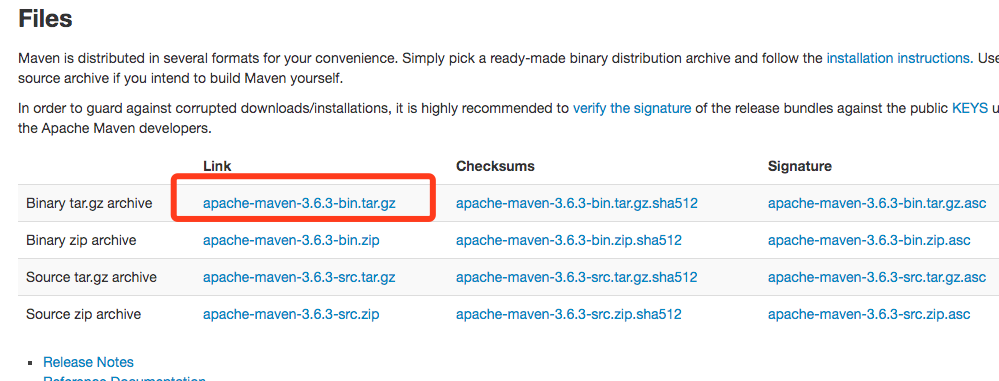【Android】Android JNI
文章目录
- 1、简介
- 1)java调用native接口
- 2)native调用java接口
- 2、jni.h
- 1)基本类型
- 2)C++中的非基本类型
- 3)C中的非基本类型
- 4)变量field与函数method
- 5)函数签名
- 6)引用类型
- 7)一个很重要的函数结构
- 8)两个很重要的数据类型:JNIEnv和JavaVM,C和C++的实现不同。
- 9)其它
- 3、jni原理
- 4、Android jni
- 5、AndroidRuntime
1、简介
JNI,Java Native Interface,用于Java与C/C++相互调用的接口,下面举例说明其用法。
1)java调用native接口
第一步,将需要本地实现的Java方法加上native声明,如下面例子中TestJNI类中的testJniAdd方法。
// TestJNI.javaclass TestJNI{private native int testJniAdd(int v1, int v2); // using native to declaration}
第二步,使用javac命令编译java类,如下面例子中编译 TestJNI.java 后生成TestJNI.class文件。
javac TestJNI.java
第三步,使用javah生成.h头文件,如下面例子中生成的TestJNI.h文件。
javah TestJNI// TestJNI.h/* DO NOT EDIT THIS FILE - it is machine generated */#include <jni.h>/* Header for class TestJNI */#ifndef _Included_TestJNI#define _Included_TestJNI#ifdef __cplusplusextern "C" {#endif/** Class: TestJNI* Method: testJniAdd* Signature: (II)I*/JNIEXPORT jint JNICALL Java_TestJNI_testJniAdd(JNIEnv *, jobject, jint, jint);#ifdef __cplusplus}#endif#endif // _Included_TestJNI
从上面自动生成的代码可以看出,jni有一定的规则,一个是数据类型和宏定义,这个是C/C++跨平台的惯例,再一个是函数签名规则,下面会介绍。
第四步,在本地代码中实现native方法,如下面例子中TestJNI.c的Java_TestJNI_testJniAdd。
// TestJNI.c#include <stdio.h>#include "TestJNI.h"JNIEXPORT jint JNICALL Java_TestJNI_testJniAdd(JNIEnv *env, jobject obj, jint v1, jint v2){int ret = v1 + v2;printf("%s called, %d + %d = %d\n", __func__, v1, v2, ret);return v1 + v2;}
第五步,编译上述的本地方法,生成动态链接库,如下面例子中使用gcc命令编译生成libjnitest.so。
gcc -fpic -shared -o libjnitest.so TestJNI.c -I
第六步,在Java类中加载这一动态链接库,如下面例子使用System.loadLibrary(“jnitest”)。
// TestJNI.javaclass TestJNI{private native int testJniAdd(int v1, int v2); // using native to declarationstatic{System.loadLibrary("jnitest"); // load native lib with xxx of libxxx.so from the right path}}
第七步,Java代码中的其它地方可以正常调用这一native方法,完整代码如下所示。
// TestJNI.javaclass TestJNI{private native int testJniAdd(int v1, int v2); // using native to declarationprivate void test(){System.out.println("called native from java: testJniAdd(10, 11) is " + testJniAdd(10, 11));}public static void main(String args[]){new TestJNI().test();}static{System.loadLibrary("jnitest"); // load native lib with xxx of libxxx.so from the right path}}
第八步,运行,首先需要导出前面生成的native lib路径,然后使用java命令运行,如下面例子中native lib库和运行java命令在同一目录。
export LD_LIBRARY_PATH=.:$LD_LIBRARY_PATHjava TestJNI
最后,运行结果如下。
Java_TestJNI_testJniAdd called, 10 + 11 = 21called native from java: testJniAdd(10, 11) is 21
2)native调用java接口
在上面介绍的java调用native接口的基础上,如下面例子,native调用java接口(native的Java_TestJNI_testJniAdd中调用java的negate)时,首先通过JNIEnv FindClass找到java类(TestJNI),然后通过JNIEnv GetMethodID找到java方法(negate),最后通过JNIEnv CallIntMethod调用java方法。
// TestJNI.javaclass TestJNI{private native int testJniAdd(int v1, int v2); // using native to declarationprivate void test(){System.out.println("called native from java: testJniAdd(10, 11) is " + testJniAdd(10, 11));}public int negate(int v){int ret = -v;System.out.println("negate called from native: " + ret);return ret;}public static void main(String args[]){new TestJNI().test();}static{System.loadLibrary("jnitest"); // load native lib with xxx of libxxx.so from the right path}}// TestJNI.c#include <stdio.h>#include <stdlib.h>#include "TestJNI.h"JNIEXPORT jint JNICALL Java_TestJNI_testJniAdd(JNIEnv *env, jobject obj, jint v1, jint v2){printf("%s called\n", __func__);jclass cls = (*env)->FindClass(env, "TestJNI");jmethodID mid = (*env)->GetMethodID(env, cls, "negate", "(I)I");jint ret = (*env)->CallIntMethod(env, obj, mid, 12);printf("called java from native: negate(12) is %d\n", ret);return v1 + v2;}
最后,运行结果如下。
Java_TestJNI_testJniAdd calledcalled java from native: negate(12) is -12called native from java: testJniAdd(10, 11) is 21
2、jni.h
下面来看看jni.h中定义了哪些内容。
1)基本类型
/* Primitive types that match up with Java equivalents. */typedef uint8_t jboolean; /* unsigned 8 bits */typedef int8_t jbyte; /* signed 8 bits */typedef uint16_t jchar; /* unsigned 16 bits */typedef int16_t jshort; /* signed 16 bits */typedef int32_t jint; /* signed 32 bits */typedef int64_t jlong; /* signed 64 bits */typedef float jfloat; /* 32-bit IEEE 754 */typedef double jdouble; /* 64-bit IEEE 754 *//* "cardinal indices and sizes" */typedef jint jsize;
2)C++中的非基本类型
/** Reference types, in C++*/class _jobject {};class _jclass : public _jobject {};class _jstring : public _jobject {};class _jarray : public _jobject {};class _jobjectArray : public _jarray {};class _jbooleanArray : public _jarray {};class _jbyteArray : public _jarray {};class _jcharArray : public _jarray {};class _jshortArray : public _jarray {};class _jintArray : public _jarray {};class _jlongArray : public _jarray {};class _jfloatArray : public _jarray {};class _jdoubleArray : public _jarray {};class _jthrowable : public _jobject {};typedef _jobject* jobject;typedef _jclass* jclass;typedef _jstring* jstring;typedef _jarray* jarray;typedef _jobjectArray* jobjectArray;typedef _jbooleanArray* jbooleanArray;typedef _jbyteArray* jbyteArray;typedef _jcharArray* jcharArray;typedef _jshortArray* jshortArray;typedef _jintArray* jintArray;typedef _jlongArray* jlongArray;typedef _jfloatArray* jfloatArray;typedef _jdoubleArray* jdoubleArray;typedef _jthrowable* jthrowable;typedef _jobject* jweak;
3)C中的非基本类型
/** Reference types, in C.*/typedef void* jobject;typedef jobject jclass;typedef jobject jstring;typedef jobject jarray;typedef jarray jobjectArray;typedef jarray jbooleanArray;typedef jarray jbyteArray;typedef jarray jcharArray;typedef jarray jshortArray;typedef jarray jintArray;typedef jarray jlongArray;typedef jarray jfloatArray;typedef jarray jdoubleArray;typedef jobject jthrowable;typedef jobject jweak;
4)变量field与函数method
struct _jfieldID; /* opaque structure */typedef struct _jfieldID* jfieldID; /* field IDs */struct _jmethodID; /* opaque structure */typedef struct _jmethodID* jmethodID; /* method IDs */
5)函数签名
typedef union jvalue {jboolean z;jbyte b;jchar c;jshort s;jint i;jlong j;jfloat f;jdouble d;jobject l;} jvalue;
6)引用类型
typedef enum jobjectRefType {JNIInvalidRefType = 0,JNILocalRefType = 1,JNIGlobalRefType = 2,JNIWeakGlobalRefType = 3} jobjectRefType;
jni支持三种引用类型,Local、Global和Weak Global。引用有自己的的生命周期,Local是自释放的,Global和Weak Global需要手动释放。Local和Global引用的对象不会被gc回收,而Weak Global引用的对象可以被gc回收。Local是线程独立的,只能在创建它的线程使用,而Global和Weak Global是支持跨线程使用的。
7)一个很重要的函数结构
typedef struct {const char* name;const char* signature;void* fnPtr;} JNINativeMethod;
8)两个很重要的数据类型:JNIEnv和JavaVM,C和C++的实现不同。
#if defined(__cplusplus)typedef _JNIEnv JNIEnv;typedef _JavaVM JavaVM;#elsetypedef const struct JNINativeInterface* JNIEnv;typedef const struct JNIInvokeInterface* JavaVM;#endif
JNIEnv是个Java虚拟机中的Runtime变量,如上面的FindClass、GetMethodID、CallIntMethod等,都在JNIEnv中定义;JavaVM则用于Java虚拟机管理相关,如获取JNIEnv、线程管理等。
9)其它
最后就是一些jni相关的宏定义。
3、jni原理
Java运行时需要load本地jni库,最终通过dlopen完成。
jni支持静态注册和动态注册。上面的例子就是静态注册,可以看出,静态注册必须遵循一定的规则,函数名过长,格式为Java_Java类名_Java函数名,前面有JNIEXPORT和JNICALL宏标记,函数参数的第一个参数为JNIEnv*,第二个参数为jobject,后面才是Java中的函数参数,这里的jobject就是对应的Java类,多个class需javah多遍,运行时查找效率不高。
关于动态注册,java在load本地lib时,会调用JNI_OnLoad,对应的还有个JNI_OnUnload,我们可以提供一个java和native的函数映射表,并注册给JVM,这样,JVM就通过函数映射表来调用相关的函数。注册函数为RegisterNatives,对应的反注册的函数为UnregisterNatives。
动态注册使用了上面提到的JNINativeMethod,name表示java中native关键字声明的函数名,
signature表示函数签名,包括参数类型和返回值类型,fnPtr表示对应的native的函数。
4、Android jni
Android jni代码位置为:frameworks/base/core/jni。从其中的Android.bp中可以看出,jni编译后的结果为libandroid_runtime动态库。
加载libandroid_runtime的地方有两处,一个在frameworks/native/services/surfaceflingerDdmConnection.cpp中的dlopen,另一个在frameworks/base/tools/preload/loadclass/LoadClass中的loadLibrary。
Android jni使用了动态加载,由AndroidRuntime统一注册,注册时使用了libnativehelper库进行传送,不过最终还是调用的jni本身的RegisterNatives函数完成注册工作。
5、AndroidRuntime
在AndroidRuntime中定义了启动的四种模式,分别是Zygote、SystemServer、Application和Tool,如下面的enum。
enum StartMode {Zygote,SystemServer,Application,Tool,};
在AndroidRuntime有四个重要的回调,可以看出AndroidRuntime的四个阶段,分别是onVmCreated、onStarted、onZygoteInit、onExit,代码如下。
/*** This gets called after the VM has been created, but before we* run any code. Override it to make any FindClass calls that need* to use CLASSPATH.*/virtual void onVmCreated(JNIEnv* env);/*** This gets called after the JavaVM has initialized. Override it* with the system's native entry point.*/virtual void onStarted() = 0;/*** This gets called after the JavaVM has initialized after a Zygote* fork. Override it to initialize threads, etc. Upon return, the* correct static main will be invoked.*/virtual void onZygoteInit() { }/*** Called when the Java application exits to perform additional cleanup actions* before the process is terminated.*/virtual void onExit(int /*code*/) { }
在AndroidRuntime的start函数中,通过startReg注册jni,代码如下。
void AndroidRuntime::start(const char* className, const Vector<String8>& options, bool zygote){/** Register android functions.*/if (startReg(env) < 0) {ALOGE("Unable to register all android natives\n");return;}}
在startReg中调用register_jni_process进行注册。
/** Register android native functions with the VM.*//*static*/ int AndroidRuntime::startReg(JNIEnv* env){if (register_jni_procs(gRegJNI, NELEM(gRegJNI), env) < 0) {env->PopLocalFrame(NULL);return -1;}}
这里有个关键的变量gRegJNI,定义如下。
static const RegJNIRec gRegJNI[] = {REG_JNI(register_com_android_internal_os_RuntimeInit),REG_JNI(register_com_android_internal_os_ZygoteInit_nativeZygoteInit),REG_JNI(register_android_os_SystemClock),REG_JNI(register_android_util_EventLog),REG_JNI(register_android_util_Log),// ...};
REG_JNI是个宏,其中的参数就是个函数名,分布在各个文件,在AndroidRuntime.cpp中使用extern进行了声明,如下代码。
extern int register_android_os_Binder(JNIEnv* env);extern int register_android_os_Process(JNIEnv* env);extern int register_android_graphics_Bitmap(JNIEnv*);extern int register_android_graphics_BitmapFactory(JNIEnv*);extern int register_android_graphics_BitmapRegionDecoder(JNIEnv*);// ...
下面是REG_JNI宏的定义,其实就是个函数指针的类型定义。
#define REG_JNI(name) { name }struct RegJNIRec {int (*mProc)(JNIEnv*);};
然后在register_jni_procs中循环调用gRegJNI数组中各个mProc即对应的函数名,从而完成jni注册,如下代码。
static int register_jni_procs(const RegJNIRec array[], size_t count, JNIEnv* env){for (size_t i = 0; i < count; i++) {if (array[i].mProc(env) < 0) {#ifndef NDEBUGALOGD("----------!!! %s failed to load\n", array[i].mName);#endifreturn -1;}}return 0;}
在各个文件的jni注册函数中,调用了core_jni_helpers.h中的RegisterMethodsOrDie,接着调用了AndroidRuntime::registerNativeMethods,然后调用了libnativehelper的JNIHelp.cpp中的jniRegisterNativeMethods,最终调用jnit本身的RegisterNatives完成注册。



































还没有评论,来说两句吧...